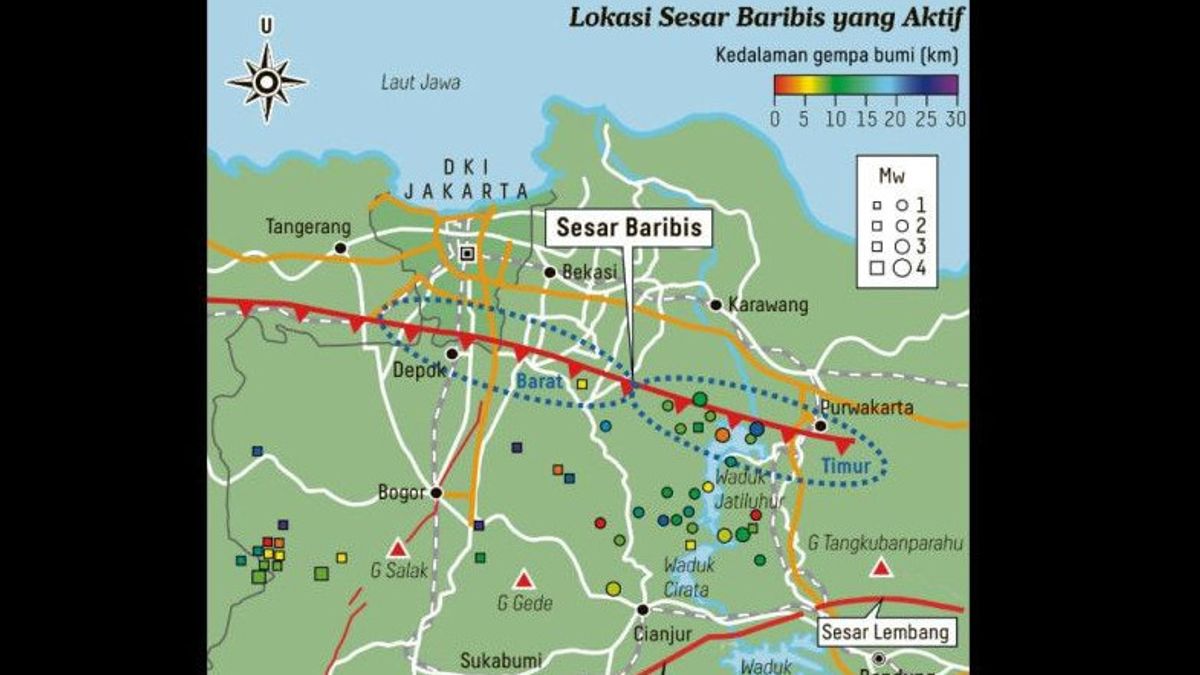JAKARTA - The DKI Jakarta Provincial Government has stated that it will strengthen regulations to disaster mitigation as a step to prevent the destructive impact of the Baribis fault.
"Efforts from our provincial government continue to seek various regulatory supports related to anticipating prevention and control, including strengthening disaster mitigation," said Deputy Governor of DKI Jakarta Ahmad Riza Patria at Jakarta City Hall, quoted by Antara, Tuesday, June 28.
Riza said that the Baribis fault activity was also a concern for the DKI Jakarta Provincial Government considering that an earthquake caused by an active fault could not be avoided.
"We know that Indonesia is indeed a country that has the potential for disasters, including the Baribis Fault. Therefore, it is of concern to all of us," he said.
Previously, the Meteorology, Climatology and Geophysics Agency (BMKG) submitted a journal that explained that the results of the study on the Baribis Fault could be accounted for.
Because the results of the study are supported by earthquake data from BMKG monitoring and primary data from monitoring in the field by the research team using sophisticated tools and valid methods.
The BMKG Earthquake and Tsunami Mitigation Coordinator, Daryono, said the Baribis Fault was proven to be active with an estimated shear rate of about 5 millimeters per year.
"In addition, this fault activity is supported by the results of the monitoring of the BMKG seismograph sensor where there is earthquake activity observed in the fault line, although in small magnitudes of 2.3 - 3.1," he said.
According to him, the structure of the Baribis Fault is estimated to have a length of about 100 km across the south of Jakarta.
However, the fault line does not stretch continuously, but is divided into segments of varying lengths.
There is also a fault that passes south of Jakarta called the Jakarta segment, then there is also a fault located in the east as the Bekasi-Purwakarta segment.
Daryono explained that with the existence of the active fault line, there is the potential for an earthquake to occur.
Based on the results of the study, it was stated that the Baribis Fault had a significant earthquake potential.
The reason is, although the Baribis Fault is classified as small in magnitude, shallow crustal earthquake activity can trigger damage.
"We have a lot of evidence that even small earthquakes with a magnitude of 4.5 can cause damage because the hypocenter is shallow and the epicenter is close to the surface," he said.
If the earthquake is larger, the potential for damage will be even greater. However, Daryono said that further studies were needed to map the fault segments.
BMKG reminded the public of the importance of implementing disaster mitigation efforts, especially in the areas of Jakarta, Bogor, Tangerang, Bekasi, Karawang, Purwakarta, and surrounding areas.
The English, Chinese, Japanese, Arabic, and French versions are automatically generated by the AI. So there may still be inaccuracies in translating, please always see Indonesian as our main language. (system supported by DigitalSiber.id)








